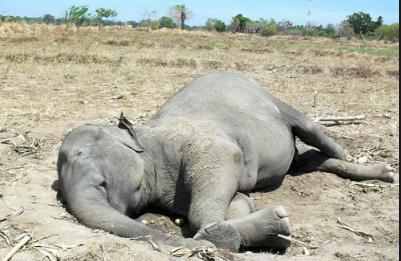
Below is a summary of the World Wildlife Fund report.
Alice Friedemann www.energyskeptic.com author of “When Trucks Stop Running: Energy and the Future of Transportation”, 2015, Springer and “Crunch! Whole Grain Artisan Chips and Crackers”. Podcasts: Derrick Jensen, Practical Prepping, KunstlerCast 253, KunstlerCast278, Peak Prosperity , XX2 report
***
Hale, T. 2018. Global Wildlife Populations Have Fallen By 60 Percent In 40 Years, WWF Report Reveals. iflscience.com
The World Wildlife Fund (WWF) has just released its biennial Living Planet Report 2018, a colossal report to track the health of the world’s wildlife populations. All in all, it paints a truly damning picture of “runaway human consumption” and the damage it’s afflicting on the world’s biodiversity.
Global populations of monitored vertebrate species have declined in size by 60 percent on average between 1970 and 2014, according to the report, which utilizes data from the Zoological Society of London’s (ZSL) Living Planet Index and the IUCN Red List of threatened species, among others. The leading driver behind this steep decline is human consumption, which has led to to the degrading of habitat through agriculture, as well as the direct overexploitation of wildlife, such as overfishing and poaching.
“Science is showing us the harsh reality our forests, oceans, and rivers are enduring at our hands. Inch by inch and species by species, shrinking wildlife numbers and wild places are an indicator of the tremendous impact and pressure we are exerting on the planet, undermining the very living fabric that sustains us all: nature and biodiversity,” Marco Lambertini, Director General of WWF International, said in a statement.
It’s worth highlighting what that “60 percent” figure means exactly – because it doesn’t mean there were 60 percent fewer animals on the planet in 2014 compared to 1970. The report tracked 16,704 different populations of over 4,000 vertebrate species from 1970 to 2014. Across all of these populations, on average, the populations declined by 60 percent. Some small populations could theoretically suffer a 90 percent loss just by a handful of individuals dying. Even if most larger populations only decline by a tiny percentage, the small populations’ large losses will bring the total average up.
Freshwater wildlife has seen the most dramatic decline of all, with an average population drop of 83 percent since 1970. The tropics are also among some of the hardest hit ecosystems, with South and Central America suffering average population declines of 89 percent.

One Response to Global wildlife populations have fallen 60% in just 40 years